Natural Plant Growth Regulators for Cannabis: From Seed Germination to Flowering
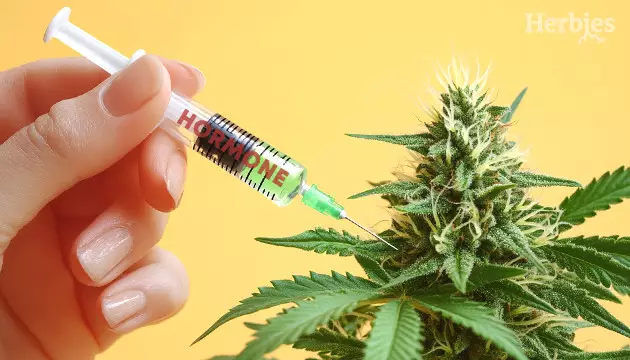
Just like the human body, plants regulate all aspects of their lifecycle with hormones. Hormones signal molecules, which are produced in one organ and get transported to another organ or tissue where they set in motion various processes. By mastering these plant growth regulators, cannabis growers can take their game to the next level.
The plant growth regulators cannabis uses from seed germination to flowering include auxins, cytokinins, and gibberellins, among others. A cannabis grower can physically redirect the flow of a particular marijuana growth hormone or provide it from an external source. Read on to learn which plant hormone promotes seed germination, what the most effective flowering hormone is, and more!
The Plant Growth Regulators Cannabis Uses
Any marijuana growth hormone gets synthesized by the cannabis plant itself, usually in tiny amounts, as this is all that’s needed for signaling.
A grower can physically influence the way a hormone is created and transported within the plant. For example, by topping the main shoot, you can curb vertical growth and stimulate branching instead. This happens because auxins, probably the most well-researched plant growth regulators used by cannabis, are produced in the top shoot (the apex) and then travel downward.
Alternatively, you can take a hormone from an external source and apply it to a plant that needs raised levels of the chemical. The trick is not to overdo this because, as we’ve mentioned, marijuana growth hormones are needed only in miniscule amounts.
A Word of Caution: Beware of Harmful PGRs!
Besides natural and safe to use cannabis growth hormones that we are going to focus on in this article, there is a group of synthetic PGRs that have been proven to be harmful to human health and environment. While they make for bigger, denser bud, harmful PGRs lower the terpene content of cannabis, its THC levels, and simply make it unhealthy to use with proven short-term and long-term consequences for human body. You can read more about them in our special article about harmful plant growth regulators for cannabis.
Now that we’ve covered that not all weed hormones are good for you and your plant, let’s take a look at every major group of natural plant growth regulators and some individual growth hormones and see how they can be used in cannabis cultivation.
Gibberellic Acid: A Cannabis Breeder’s Best Friend
Gibberellic acid (GA, or GA3) belongs to the group of growth hormones for plants called gibberellins.
The main benefit of gibberellic acid is that it makes female plants turn male and produce pollen. You can water your cannabis with a gibberellic acid solution and make your whole female plant turn male, or you can spray just one branch so that male flowers grow on this branch only and the rest of the plant stays female. The pollen produced this way can be used for self-pollination or to pollinate other plants. You can even collect and store it for future grows. In either case, you will get feminized seeds (not regular seeds) with this pollen.
Try experimenting with an up to 200ppm gibberellic acid solution, applying it for 10 days on a plant that has just started flowering.
There are also more exotic ways of using gibberellic acid on cannabis plants. Some growers make use of the fact that gibberellic acid is a plant hormone that promotes seed germination, in that it breaks the dormancy of old or improperly stored marijuana seeds. You can pre-soak such seeds in a 500-1000ppm gibberellic acid solution and then proceed to germinate them in the usual way.
Other growers have tried weaker gibberellic acid preparations (up to 100ppm) to spray seedlings and adult plants to make them stretch more. This may come in handy on those rare occasions when a pot plant is too thickset and tight, with too short internodes.
Gibberellic acid is sold in a powdered form and is widely available.
Auxins: The VIPs Among Marijuana Growth Hormones
Even if you’ve never heard of auxins before, you’ve certainly manipulated these potent cannabis growth hormones every time you trained your plants.
Auxins are unique in that they shy away from light and react to gravity. This means that auxins are produced in plant tops and immediately travel downward or to the more shaded areas of the plant. They stimulate cell division and elongation, which is why the main shoot of a plant is often the fastest-growing – it simply has the highest concentration of auxins. And if you cut the main shoot, this will change the hormonal balance; now, the side shoots are the ones with the most auxins and will begin to catch up rapidly.
Although levels of auxins diminish the further down the plant they go, this downward movement never stops. Auxins only come to rest when they reach the roots, where they stimulate growth and branching. This makes auxins the most important rooting hormones for cannabis, and many rooting stimulators contain them.
Popular cannabis root hormones include Growth Technology Clonex, Miracle-Gro FastRoot, Midas Products Rooting Compound, and Garden Safe TakeRoot, just to name a few. It’s worth noting that the most commercially used auxins are indole-3-butyric acid (IBA) and – to some extent – indole acetic acid (IAA).
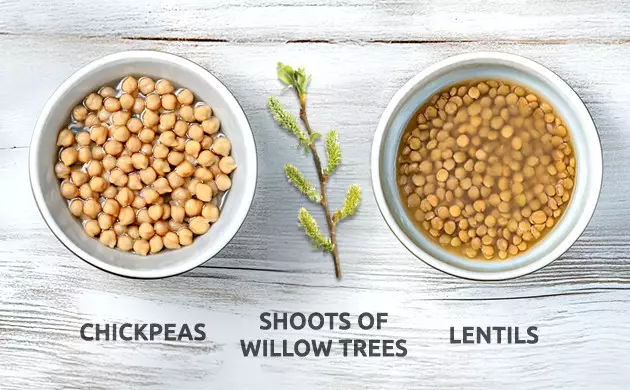
Alternatively, you can use organic root hormones for stronger cannabis by making teas from sprouted seeds of such legumes as lentils and chickpeas. Other natural sources of auxins are kelp/seaweed, coconut water, and young shoots of willow trees that you can chop, boil, and then use for watering.
Cytokinins: Cannabis Plant Hormones with a Reverse Effect
In a sense, cytokinin is a weed growth hormone that works in the opposite way to auxins. They too promote cell division and stimulate new growth but, unlike auxins, are produced in the roots, not the top shoots. Cytokinins work their way up the plant, where their concentration gradually diminishes. This is the reason why lower side branches are usually much longer than those closer to the top.

A cannabis grower can make use of cytokinins to increase the number of side branches and bud sites, thus ensuring bigger yields. Both kelp/seaweed and coconut water – which we mentioned as a great source of auxins – are also rich in cytokinins.
A synthetic form of these growth hormones for cannabis is kinetin. This is available online and can be used for foliar sprays, especially during the seedling and vegetative stages.
Ethylene: A Powerful Flowering Hormone
Naturally, growers are mostly interested in hormones for cannabis budding, and the most prominent flowering hormone is ethylene.

Ethylene is a gas that is naturally produced by many plants, but especially by ripe fruit such as bananas, apples, melons, and mangos. By hanging a bunch of overripe bananas in the grow tent, you can try and speed up the maturation of your marijuana buds. However, be careful with ethylene because it slows down vegetative growth and can therefore hurt vegging plants.
Ethylene is also a plant hormone that promotes seed germination, so you can use it on seeds that won’t germinate on their own.
One might think that the gaseous form of ethylene would make it rather impractical for cannabis cultivation, but nothing could be further from the truth. There are many commercial products that release ethylene when applied to crops, including Cerone, Ethrel, and Terpal, among others.
Abscisic Acid, or ABA
Abscisic acid (also known as ABA) is a very special marijuana growth hormone that actually inhibits growth to help a plant survive such extreme conditions as cold or draughts. ABA makes the foliage of plants transpire less water and slows down photosynthesis, thus saving even more water.
Although a rare product, abscisic acid can be purchased online. It may come in handy during a heatwave, when neither frequent watering nor shading seem to help your marijuana garden. Abscisic acid is sometimes marketed under the name Dormin.
Other Important Growth Regulators for Cannabis
Jasmonic Acid
Jasmonic acid is a hormone that promotes wound healing. Plants, including cannabis, produce this when a herbivore has eaten some of the foliage. The same happens when a grower prunes or defoliates his marijuana garden.
Since jasmonic acid temporarily slows any new growth to redirect all available energy to repairing the damage, a grower should keep this in mind. On the other hand, studies suggest that the release of jasmonic acid due to trauma makes a cannabis plant produce more trichomes and more THC (although the effect on CBD, by the way, is exactly the opposite).
Triacontanol and Brassinolide Combo
Thanks to these two PGRs (plant growth regulators), cannabis ramps up its growth rate, vigor, and ultimately bud production. In addition, triacontanol increases photosynthesis, while brassinolide makes plants more resistant to disease and such environmental stressors as cold and drought.
These two hormones for cannabis are often sold as a two-part PGR kit but are also available separately.
Salicylic Acid
Salicylic acid is a chemical related to aspirin. It’s also an active ingredient in many over-the-counter acne medications.
Salicylic acid has been studied as a very powerful marijuana growth hormone. It can increase the natural resistance of plants to pathogens and pests, as well as contribute to healthier foliage and bigger buds. Salicylic acid has also shown promise in the expression of genes for the production of THC and CBD.
The good news is that you can source salicylic acid from the same ‘willow water’ that we described earlier when we talked about auxins. Just drop some young willow shoots into boiling water and leave them to steep overnight, and you’ll get an organic product chock-full of many marijuana growth hormones, including salicylic acid.
Final Thoughts
There are many natural plant growth regulators available to cannabis growers. Their use is safe and warranted by the fact that all of them are produced by the plant itself. However, if you’re a novice gardener, leave the experimentation with PGRs and hormones until after you learn everything else about growing this plant. When you do begin to play around with plant growth regulators, be careful with doses and use natural sources of marijuana growth hormones. Always remember to stay away from harmful, synthetic plant growth regulators for weed – a larger yield isn’t worth risking the quality of the harvest and especially your health.
Herbies Head Shop expressly refuses to support the use, production, or supply of illegal substances. For more details read our Legal Disclaimer.

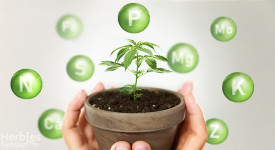
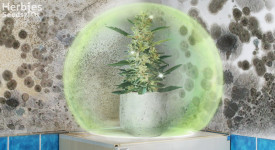






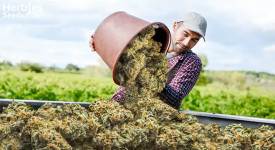


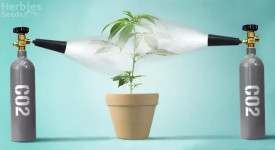

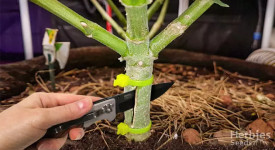
Thank you for leaving a comment for us!
Your feedback will be posted shortly after our moderator checks it.
Please note that we don’t publish reviews that: